With help from abroad, the Saakashvili regime for two years restored the military potential of Georgia
This is largely due to the fact that the world community did not accept Russia's proposal to impose an international embargo on supplies of weapons and military equipment to Georgia. In connection with the constant buildup of Georgia’s military potential in the post-conflict period, Russia has long been seeking the introduction of an embargo, but Russia's arguments have not been accepted.
Moreover, during these two years, weapons from abroad were actively supplied to Georgia.
The restoration of military potential was conducted in three main areas. These are infrastructure (bases and other military facilities), the purchase of military equipment to compensate for the losses and the improvement of training for military personnel of the Georgian army.
PURCHASE OF MILITARY EQUIPMENT FOR LIFE EXECUTION
At the time of the end of the conflict during the hostilities, losses in equipment of the Georgian Armed Forces amounted to 6-8 aircraft, 16-20 tanks, 14-18 BMP and BTR, 2-3 launchers MLRS and radar.
According to Russian media, 65 Georgian tanks were captured in South Ossetia. Of these, 44 MBTs were exported to Russia. The rest of the tanks were destroyed on the spot due to a malfunction, or total unsuitability for operation.
Russian troops also captured 5 PU Osr, 15 BMP-2, several 122-mm towed howitzers D-30, and Hammer 15 armored vehicles.
A significant amount of equipment was seized at the Georgian military bases. In particular, in Gori, during the retreat, Georgian troops left 15 T-72 tanks, several dozen armored vehicles and artillery systems along with ammunition. Part of the ammunition was destroyed or evacuated to Russia. A large number of small weapons was taken as trophies from the base in Senaki.
During the fighting, 15 units were destroyed or damaged. surface ships, including several patrol boats.
These losses in military equipment are not so significant compared with what was in service with the Georgian army.
As of January 1 2008, the armed forces of Georgia had the following types of weapons.
Armored vehicles: 196 OBT T-72, 62 OBT T-55 / AM2, 60 BMP-1, 85 BTR-2B, 2, 60 BNT-17, 70 bt-27; Lb
Artillery systems: X-NUMX-mm T-100 guns - 12 units, 40-mm guns D-122 - 30 units, 83-mm guns 1522 - 36 units, 3-mm guns 152XXNXXXXXXXXXXXXXXXXXXXXXXXXXXXXXXXXXXXXXXXXXXXXXXXXXXXXT SAO 2C65 - 11 units, 152-mm SAO 2C19 "Acacia" - 1 units, 152-mm SAO "Dana" - 2 units, 3-mm SAO 13С152 "Pion" - 24 units.
Mortars: 60-mm S6-210 - 30 units, 82-mm M-69 - 25 units, 100-mm M-57 - 50 units, 120-mm M-43 - 31 units, 120-mm BMM -52 - 25 units
ATGM: “Fagot” - 56 units, “Competition” - 758 units, “Combat” - 400 units.
MLRS: 122-mm RM-70 - 6 units, 122-mm BM-21 - 16 units, 160-mm LAR - 4 units, 262-mm M-87 "Orkan" - 4 units.
UBS: L-39 "Albatross" - 8 units, Su-25UB - 1 units., L-29 "Dolphin" - 9 units.
Attack aircraft: Su-25 - 5 units, Su-25K - 17 units.
Helicopters: IH-1H Iroquois - 7 units, Mi-2 - 2 units, Mi-8T - 4 units, Mi-24 - 9 units.
BLA: Hermes-450 - from 8 to 16 units
ZSU and ZU: 23-mm ZSU-23-4 Shilka - 4 units, ZU 23-mm ZU-23-2М - 12 units
VMT: amphibious boats - 4 units, artillery boats - 2 units, patrol boats - 34 units, rocket boats - 1 units, mine-sweeping ship - 1 units.
MANPADS: “Thunder” - 30 units, “Strela-2M” - more than 200 units.
Air defense systems: PU-Buk-М1 - 6 units, "Circle" - 40 units, "Osa-AKM" - 4 units, C-75 / 125 - 35 units.
The above data refer to the beginning of the 2008 year. By the time of the aggression against South Ossetia, that is, in the 7 months of 2008, a very significant supply was made for a number of types of military equipment.
It should be noted that, both before and after the aggression against South Ossetia, along with the declared export of arms to Georgia, many countries practiced with the Saakashvili regime the so-called “black” and “gray” exports of military equipment. This was especially characteristic of the post-conflict period. A huge number of weapons were transferred free of charge, or at dumping prices. For the most part, weapons were supplied from the presence of the Armed Forces of the respective countries. Many transactions were carried out in secret and were not declared anywhere. From the point of view of military-technical cooperation in recent years, Georgia can be characterized as a “black hole”.
In this regard, military exports to Georgia in the period after the end of the conflict and up to the present time cannot be fully calculated. Nevertheless, certain statistics are available and are constantly being updated, since the data on many contracts implemented becomes known much later after the actual transfer of weapons. Currently, TSAMTO estimates the identified arms exports to Georgia in the last two years, ranging from 20 to 25 percent. from its real volume.
However, even with the identified supplies, a list of which is given below, it can be judged that Georgia’s military potential in terms of equipping military hardware is not only restored, but also exceeds the pre-war level.
UKRAINE.
Georgia chose Ukraine as a strategic ally in the supply of arms and military equipment. Ukraine carried out active deliveries of armaments to Georgia right up until the election of President Viktor Yanukovych (that is, until February of 2010).
According to the RF Ministry of Defense data released shortly after the end of the conflict, Ukraine planned to supply Georgia with 25 BTR-80, 20 BMP-2, 3 MLRS Smerch, 12 units. 152-mm self-propelled howitzer 2C3 "Acacia", 50 MANUAL-1 and 400 missiles for them, 10 attack helicopters, 300 sniper rifles of the SVD, 10 thousand AK-74 automatic rifles, 1 AKP X-NUMX, X-NUMX AK-7 automatic rifles, X-NUMX AK-60 automatic rifles, 5,45 AK-39 automatic rifles, X-NUMX AK-30 X-guns, 7,62 automatic rifles SVD, 39 kh.A. 5x7, 25 million 70x100 cartridges, 55 thousand RPG-25В rounds, anti-tank mines (2008 t), anti-personnel mines (12 t), 84 engines for T-XNUMX tanks. In addition, Ukrspetsexport prepared documents for the delivery of technical systems for the Su-XNUMX attack aircraft to Georgia. In the fourth quarter of XNUMX, the plan was to deliver XNUMX new OBT T-XNUMXU Oplot to Georgia.
Most of the above data is not subject to control and identification. The following are only identified shipments.
In 2009, Ukraine delivered 10 OBT T-72 to Georgia, as well as 3 BTR-80 from the Armed Forces (estimated value of 3,3 million dollars). In the same year, the contract for the supply of 25 BTR-70 (estimated, in 2009, the last batch was delivered to 10 machines).
In addition, in 2009, 20 MANPADS “Igla” from the Armed Forces (estimated 1 million dollars), 40 units were supplied. MANPADS "Strela" from the Armed Forces (2 million dollars) and the next batch of ATGM "Combat" (number is not known). Before the conflict, 400 ATGM of this type was supplied.
On 2008, the delivery of the 4 radar to the Kolchuga-M RER was planned (previously, one station was delivered). It is possible that not all DER radars in the 2008 year were delivered until August. In this case, part of the supply came at the end of 2008.
In July, 2009, the former general director of the state-owned Ukrspetsexport state company, Sergey Bondarchuk, stated that "Ukraine has fulfilled and continues to fulfill the contracts concluded earlier for the supply of weapons to Georgia."
S. Bondarchuk confirmed the fact that Osa, Buk, the Kolguga-M radar, the Mi-8 and Mi-24 helicopters, infantry fighting vehicles and small arms had been delivered to Georgia by air (most of these deliveries were implemented before the conflict began).
ISRAEL.
In 2006-2008 Israel was implementing a program to upgrade 165 MBT T-72 to T-72-SIM-1 (100 million dollars). According to reports, before the start of the conflict, this program was not fully implemented. That is, probably, several dozen MBTs (presumably 35 units) could be upgraded after the end of hostilities.
Georgian armed forces in 2006 ordered 40 UAV Hermes-450 worth about 400 million dollars. In 2007-2008 It was delivered from 8 to 16 BLA. The remaining deliveries are calculated for the period 2009-2011. (estimated by 8 UAV per year).
According to reports, Israel was not limited to deliveries of unmanned aerial vehicles to Georgia. In particular, Israel planned to supply a large batch of small arms and ammunition for the Georgian army through the Bulgarian company Arsenal - 50 thousand AKS-74 assault rifles, about 1 thousand RPG-7 grenade launchers and almost 20 thousand 40-mm grenades, and about 15 thousand. 5,56-mm assault rifles.
BULGARIA.
In 2009, the 12 units were supplied from the Bulgarian armed forces for the Georgian armed forces. X-NUMX-mm field artillery guns D-122 (estimated 20 million dollars), as well as 2 units. 12-mm MLRS RM-122 (estimated 70 million dollars).
TURKEY.
In 2009, Turkey transferred the Georgian Armed Forces 70 BTR Ejder (40 million dollars). In 2009, the contract for the supply of the Cobra 100 armored vehicles was completed. It is estimated that the last Cobra 2009 armored vehicles were delivered in 30. For the Coast Guard of Georgia in 2009, Turkey supplied a patrol boat (type not known).
FRANCE.
In the summer of 2010, Eurocopter signed a memorandum of intent with Georgia on the purchase of two AS-332 Super Puma helicopters for delivery in 2012. (estimated 30 million dollars).
USA.
In September 2009, the United States offered to supply Georgia with a large batch of weapons, military equipment and ammunition worth more than 100 million dollars. According to available data, in response to the official Tbilisi’s request for military assistance, a proposal was sent to Georgia for the delivery of air defense systems, anti-tank systems, automatic small arms and ammunition.
The proposed nomenclature of weapons included the Patriot air defense missile system, the Stinger and Igla-3 MANPADS in portable and transportable variants, the Javelin and Helfire-2 ATGMs, as well as a large number of small-arms cartridges. Reliable data on the implementation of all or part of these supplies is not available.
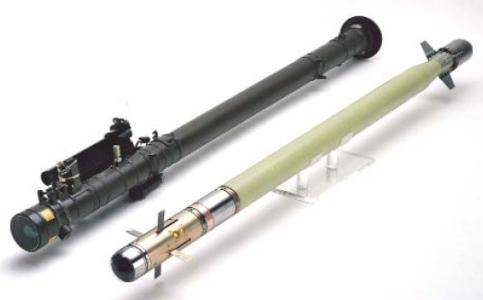
It should be noted that the United States concentrated the greatest financial resources in terms of providing military assistance to Georgia in the post-conflict period not on the supply of weapons, but on restoring the military infrastructure and training the personnel of the Georgian army.
Overall, the identified arms imports of Georgia in 2009 amounted to 65 million dollars against 85,2 million dollars in 2006, 247,6 million dollars in 2007 and 265,7 million dollars in 2008. This suggests that post-conflict supplies were extremely closed.
RESTORATION OF MILITARY INFRASTRUCTURE
During the fighting, the greatest material damage was inflicted on the military infrastructure of Georgia. These are military bases, warehouses, airfields, ports and means of communication. The post-war restoration of the infrastructure of the Georgian Armed Forces has become the most expensive event. It was carried out mainly by funding from extrabudgetary sources. This is a different kind of assistance that the Western countries provided for the “restoration” of the Georgian economy.
In particular, the means of “military-humanitarian aid” of the United States and NATO were sent to restore the infrastructure. In general, the United States has reserved for the provision of military assistance to Georgia 1 billion dollars. Some of these funds have already been spent in the period after August 2008. The North Atlantic Alliance provided similar assistance as part of programs aimed at strengthening the defense, economy and security of Georgia.
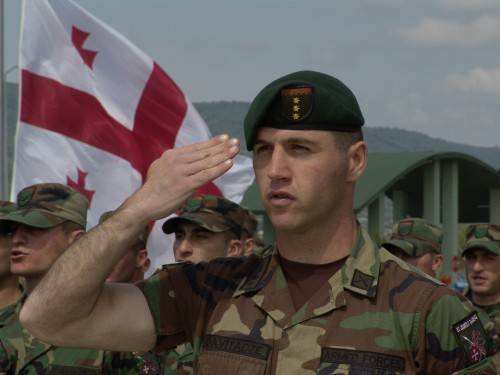
PREPARATION OF PERSONAL COMPOSITION OF THE GEORGIAN ARMY
The combat readiness and morale of the Georgian army were deemed extremely low following the conflict. In this regard, the United States focused on the further training of Georgian military personnel.
In January, 2009 between the two countries signed the "Charter on Strategic Partnership", in accordance with which the United States made a commitment to modernize the Georgian army and improve the country's defense capability. At the same time, the term “strengthening the defense capacity of Georgia” meant, above all, education and training of the personnel of the Georgian Armed Forces, which was considered much more important than the supply of arms.
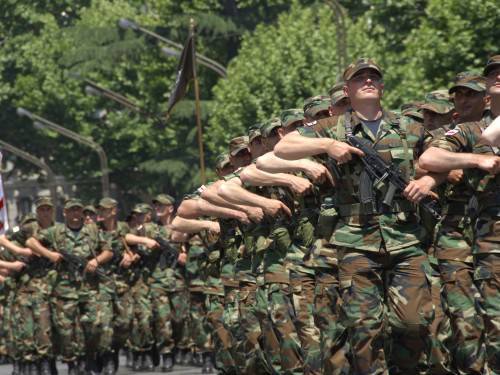
In August, 2009, the US military instructors launched the 6-month-long training program for military personnel in Georgia, which were sent to Afghanistan in the spring of 2010.
The rotation of the Georgian battalion in Afghanistan takes place once every six months, so in 2010, American instructors will train two more battalions in Georgia. The rotation of the contingent of the Georgian Armed Forces in Afghanistan is also a convenient reason for the secret transfer of American weapons to Georgia. The sending of the Georgian contingent and equipment from Afghanistan to Georgia is carried out by US military transport aircraft and is not controlled by anyone. That is, along with the rotation of the Georgian contingent, the option of a parallel supply of armaments that were in service as part of the US Armed Forces in Afghanistan (primarily light armored vehicles, small arms, communications equipment) is not excluded.
It should be noted that the military assistance of Western countries is carried out against the background of the increasing “closeness” of the military budget of Georgia. In the 2009 year, despite the fact that the country's GDP fell by more than 1 billion dollars, 519 million dollars was originally allocated for military spending. However, as the practice of recent years has shown, the military budget is already being repeatedly revised during its execution, and in the direction of a significant increase. That is, the total data on the military budget 2009 of the year should be significantly higher.
ASSESSMENT OF THE SITUATION AT THE CURRENT MOMENT
Summing up the two years that have passed since the end of the conflict, it should be noted that the restoration of Georgia’s military potential in such a short time seriously complicated the military-political situation in the Caucasus and made the new “relapse” of aggression by Georgia quite likely.
Obviously, it is beneficial for Western countries to maintain a constant focus of tension on the southern borders of Russia. Under these conditions, Russia has to constantly keep in the Caucasus direction a reinforced grouping of forces and means, since only the Russian military presence in South Ossetia and Abkhazia is a deterrent from attempts by the Saakashvili regime to unleash a new large-scale conflict in the Caucasus.
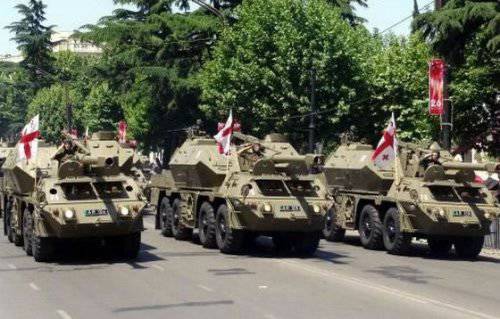
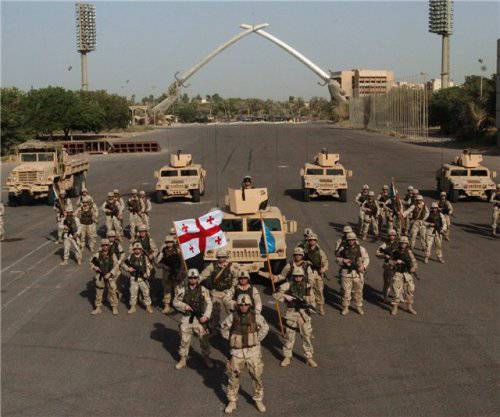
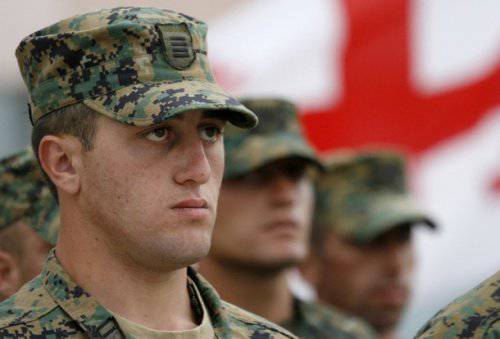
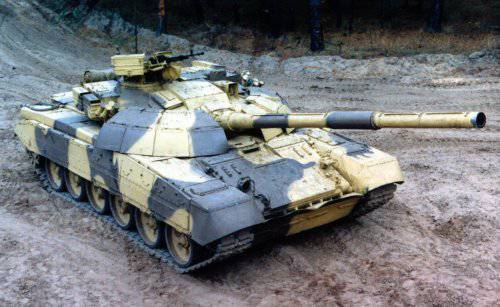
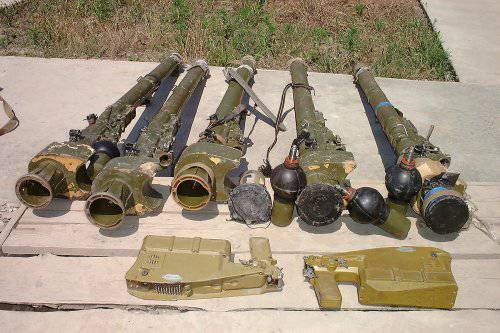
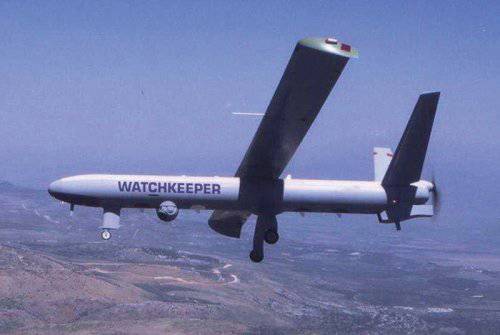
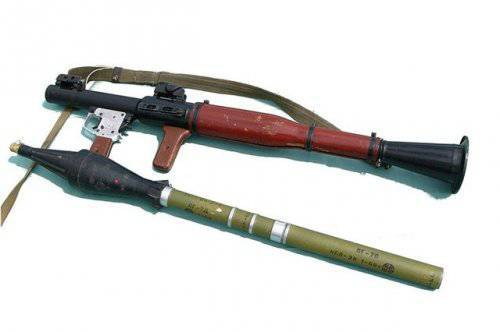
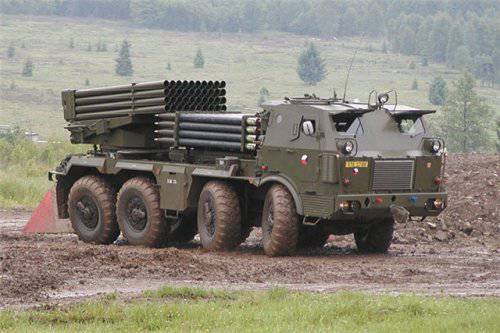
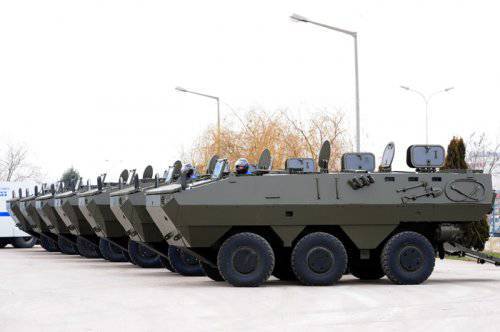
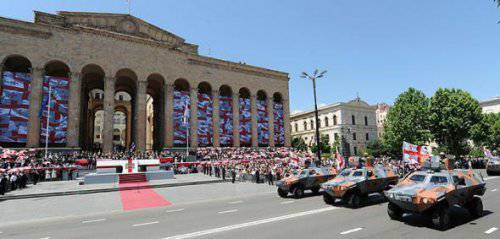
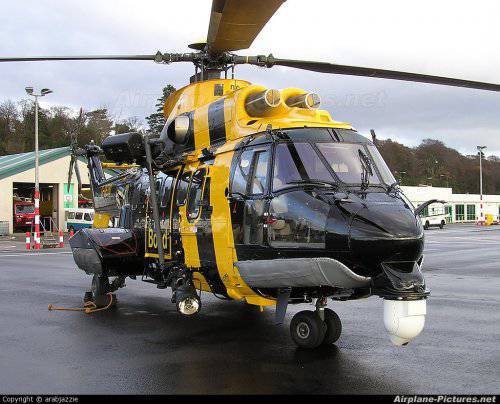
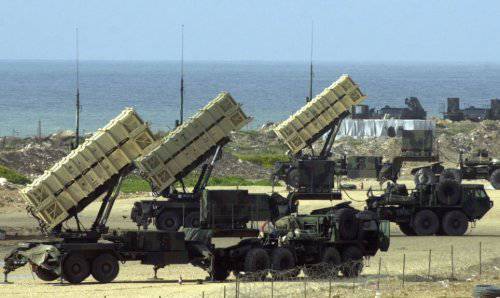
Information